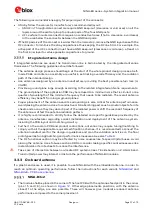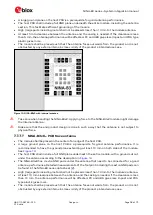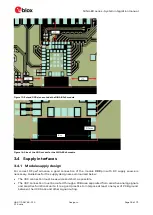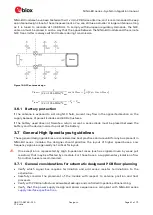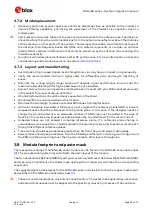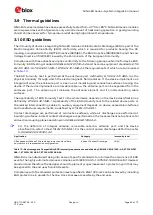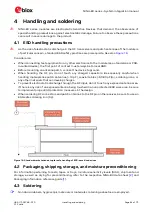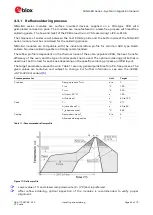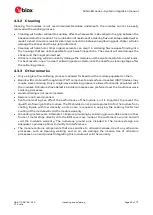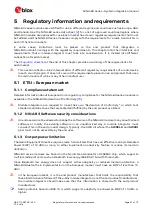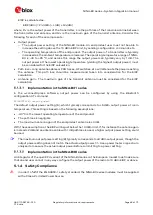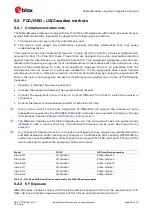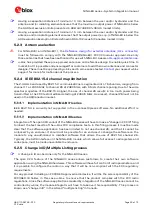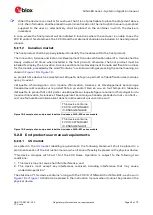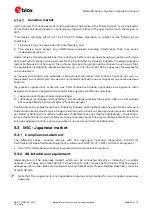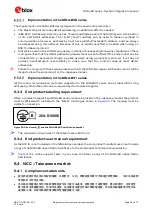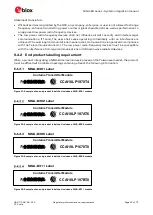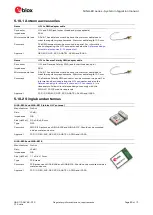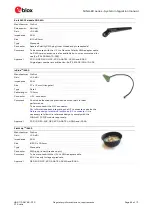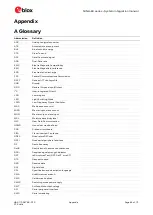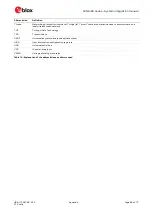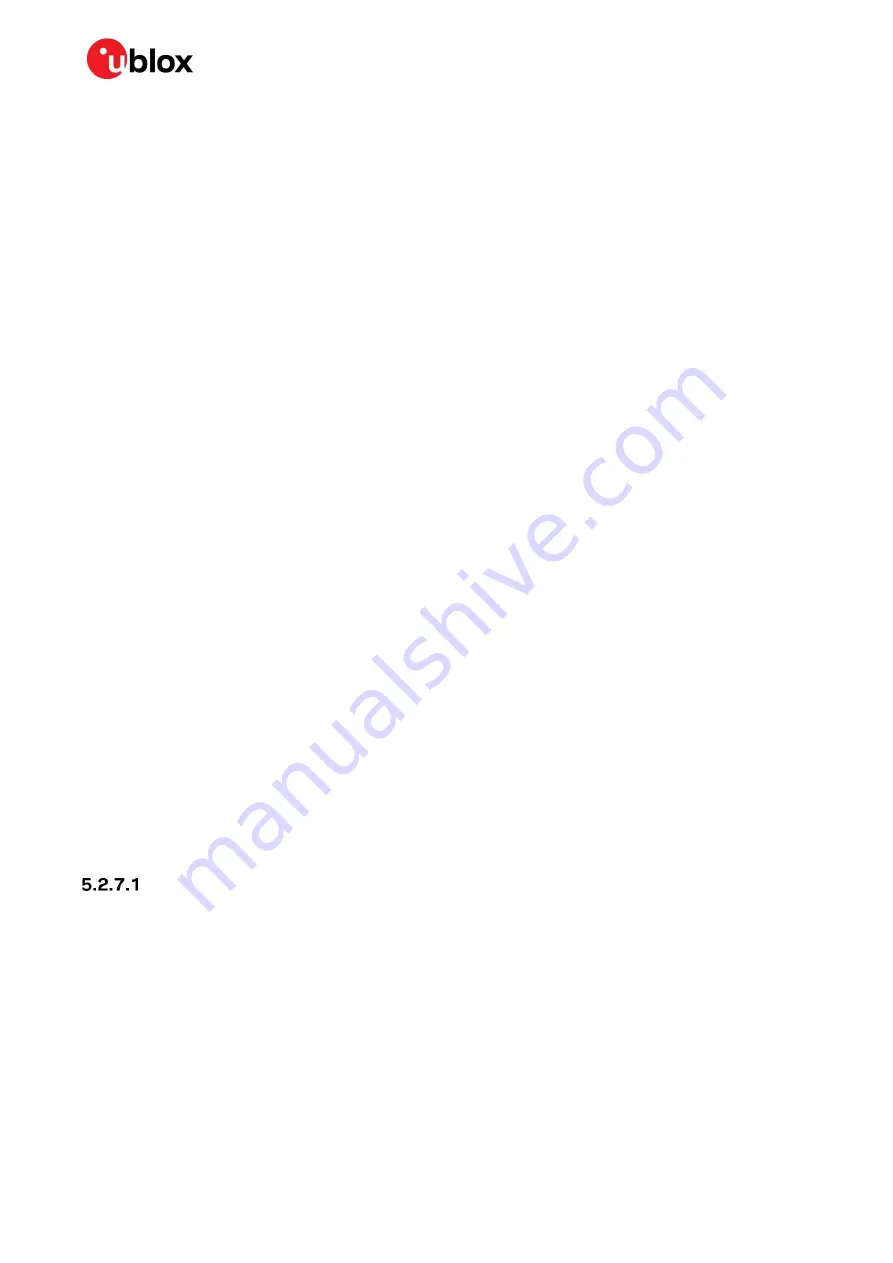
NINA-B3 series - System integration manual
UBX-17056748 - R13
Regulatory information and requirements
Page 51 of 72
C1-Public
Most FCC accredited test houses can provide the service to make a change in ID. Module integrators
can also make an application themselves to a Telecommunication Certification Body (TCB). Typically,
the following documentation has to be submitted:
•
A permission letter, signed by u-blox, that allows the module integrator (or test house) to make
the change in ID.
•
An application letter stating that there is no change in the design, circuitry, or construction of the
NINA-B30 module, and that the original NINA-B30 test results are still representative of the new
product. Minor cosmetic differences are allowed but must be described.
•
Photos of the product showing the nameplate or label containing the new FCC ID.
•
The user manual for the product.
•
(Optional) Short- and long-term confidentiality requests. The FCC typically makes all submitted
photos and documentation publicly available on their website. Applicants can request that certain
sensitive information is published later or not at all.
5.2.6
End product verification requirements
⚠
The modular transmitter approval of NINA-B3, or any other radio module, does not exempt the end
product from being evaluated against applicable regulatory demands.
The evaluation of the end product shall be performed with the NINA-B3 module installed and
operating in a way that reflects the intended end product use case. The upper frequency
measurement range of the end product evaluation is the 5th harmonic of 2.4 GHz as declared in 47
CFR Part 15.33 (b)(1).
The following requirements apply to all products that integrate a radio module:
•
Subpart B - UNINTENTIONAL RADIATORS
To verify that the composite device of host and module comply with the requirements of FCC part
15B, the integrator shall perform sufficient measurements using ANSI 63.4-2014.
•
Subpart C - INTENTIONAL RADIATORS
It is required that the integrator carries out sufficient verification measurements using ANSI
63.10-2013 to validate that the fundamental and out of band emissions of the transmitter part of
the composite device complies with the requirements of FCC part 15C.
When the items listed above are fulfilled, the end product manufacturer can use the authorization
procedures as mentioned in Table 1 of 47 CFR Part 15.101, before marketing the end product. This
means the customer has to either market the end product under a Suppliers Declaration of
Conformity (SDoC) or to certify the product using an accredited test lab.
5.2.7
End product labelling requirements
US market
An end product using the NINA-B3 series modules must have a label containing, at least, the
information shown in
. The label must be affixed on an exterior surface of the
end product such that it will be visible upon inspection in compliance with the modular approval
guidelines developed by the FCC. In accordance with 47 CFR § 15.19, the end product shall bear the
following statement in a conspicuous location on the device:
“This device complies with Part 15 of the FCC Rules. Operation is subject to the following two
conditions:
1.
This device may not cause harmful interference, and
2.
This device must accept any interference received, including interference that may cause
undesired operation.”

